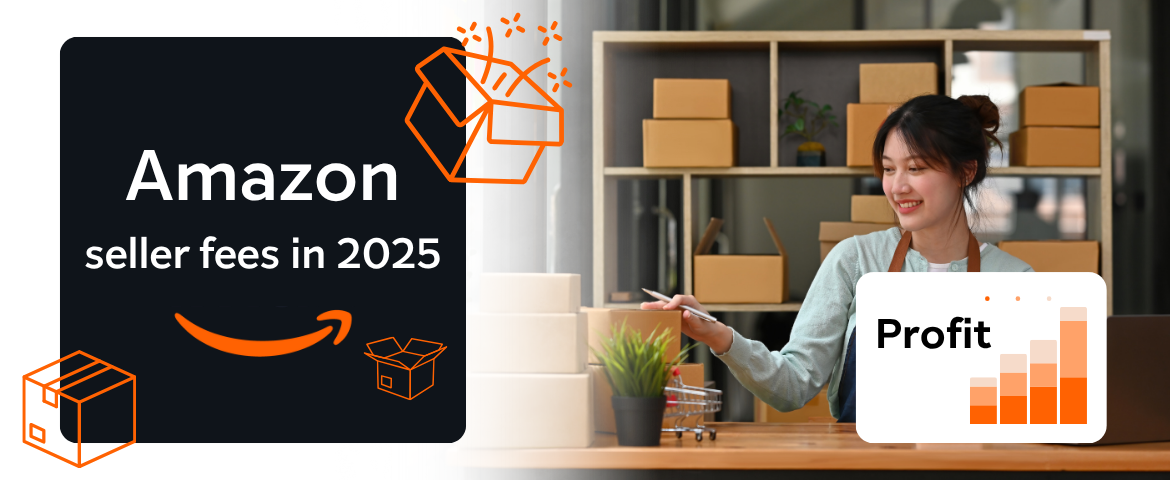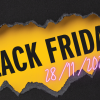Amazon Seller Fees in 2025: What You Need to Know to Keep More Profit

Selling on Amazon can still be a solid money-maker but only if you’ve got a good handle on its fees. Every charge, from referrals to storage, eats into your profit. So if you want to price smartly and grow your margins, you’ll need to know exactly where your money’s going.
In this guide, we’ll break down the main Amazon seller fees for 2025 from referral rates and fulfillment costs to refund charges, storage fees, and other hidden expenses. Whether you’re already an experienced seller or just getting started, this will help you plan your pricing and protect your profit.
How much does it actually cost to sell on Amazon?
Selling on Amazon isn’t free there are both fixed and variable fees involved. How much you’ll pay depends on your selling plan, the type of products you sell, and how you handle fulfillment and storage.
Let’s take a look at the main fees sellers need to be aware of.
1. Main Amazon Seller Fees
Understanding the key costs upfront makes a big difference. Referral fees change by category, so you’ll need to know which rate applies to your listings. Here’s the breakdown.
Referral Fees
Referral fees are Amazon’s main cut from your sales a percentage of the product’s total selling price (including shipping and gift wrapping, but not taxes collected via Amazon’s system).
Rates vary by category, generally between 6% to 45%, though most fall around 8%–15%. For certain products, the fee drops once the item’s price goes beyond a specific threshold (usually above USD $10).
There’s also a minimum referral fee of USD $0.30 per unit.
Closing Fees
On top of referral charges, certain categories — mainly media items — come with a flat “closing fee,” typically around USD $1.35 to $1.80 per unit. This covers order processing and handling for products such as:
- Books (novels, textbooks, and other printed material)
- DVDs, Blu-rays, or other video discs
- Music (CDs, vinyl, or similar formats)
- Physical software or PC/game discs
- Game consoles and accessories
To balance out these fees, highlight unique selling points such as exclusive editions or product bundles in your listings to justify your pricing.
2. Amazon Seller Account Fees
To run your Amazon business properly, it’s important to know how each account type and its fees affect your total revenue.
Individual Seller Fees
If you sell fewer than 40 items per month, you’ll be under the Individual Plan — where you’re charged USD $0.99 per item sold. This plan suits small-scale or casual sellers who don’t want to commit to monthly costs.
Professional Seller Fees
Those on the Professional Plan pay a flat USD $39.99 per month. It’s much more value-for-money if you’re selling in higher volumes (over 40 items monthly). This plan unlocks extra tools like bulk listings, promotions, and advanced reporting features.
3. Fulfillment Options & Their Costs
Fulfillment by Amazon (FBA)
FBA lets you store your stock in Amazon’s warehouses. Amazon takes care of packing, shipping, and customer service but this convenience comes at a cost.
- FBA Fulfillment Fees: Based on item size and weight – around USD $2.50 to $6.15 per unit for standard-size products, with higher rates for oversize items.
- Monthly Storage Fees: Charged by cubic foot and higher during Oct–Dec due to peak season demand. If your stored inventory exceeds sales activity, you may get hit with an extra storage utilization fee (USD $0.75–$2.40 per cubic foot).
- Low Inventory Level Fee: Added from late 2023 onwards, this penalises sellers who maintain too few units in stock. It varies by item type and size.
Fulfillment by Merchant (FBM)
If you prefer to handle everything yourself storage, packing, shipping, and customer care that’s FBM. You won’t pay Amazon for fulfillment, but you’ll still owe referral and closing fees.
Keep these in mind:
- Calculate your own shipping costs using courier rate tools (UPS, FedEx, USPS).
- Negotiate lower rates if you ship in bulk.
- Use light but sturdy packaging to cut weight costs.
- Automate shipping with tools like ShipStation or Shippo to save time.
- Offer several shipping options standard, express, or free shipping thresholds to balance costs and customer satisfaction.
Seller Fulfilled Prime (SFP)
SFP lets you offer Prime shipping while handling delivery yourself. However, you’ll need to meet Amazon’s strict performance standards. You’ll bear the shipping and service costs while maintaining Prime delivery speed and quality.
4. Special Category Fee
Some product categories, such as media, jewelry, watches, fine art, apparel, and footwear, have different fee structures — usually higher due to handling or authentication requirements.
Tips to handle these:
- Understand the specific fee rate for your category.
- Use proper protective packaging.
- Provide authenticity documents (for watches or fine art).
5. Lithium Battery Fees
Amazon also applies a per-unit charge for products containing lithium batteries due to extra safety and transport rules. The amount varies by item and battery type.
To stay compliant:
- Know the shipping rules for lithium-ion vs lithium-metal batteries.
- Use certified packaging and labeling.
- Work with verified suppliers.
- Consider FBA Export to simplify overseas shipments and compliance.
6. Other Amazon Fees You Should Know
Beyond the standard fees, there are a few others that might surprise you.
High-Volume Listing Fee
If you manage over 100,000 active ASINs, Amazon charges USD $0.005 per listing per month (for non-media products). That can quickly add up for businesses with large catalogs.
Amazon Currency Converter for Sellers (ACCS)
For global sellers, Amazon’s currency conversion fee ranges between 0.75% and 1.5% of the converted amount. To cut costs:
- Keep an eye on exchange rate differences.
- Convert larger sums less frequently.
- Consider using Wise or Payoneer for potentially lower rates.
- Maintain a local bank account where possible to skip conversion entirely.
Textbook Rental Fees
If you’re renting out textbooks, remember there are standard rental fees plus potential extra charges for late or damaged returns. Price competitively while factoring in these risks.
Refund Administration Fee
When a buyer returns an order, Amazon refunds most of the referral fee but keeps a small portion up to 20% of the original fee or USD $5, whichever is less.
To reduce these costs:
- Keep product descriptions accurate.
- Maintain strong quality control.
- Track return reasons and fix recurring issues.
- Be proactive in customer communication.
By understanding every layer of Amazon’s fee structure, you can plan better, price smarter, and keep more of your profit whether you’re selling from Singapore or anywhere else in the region.








